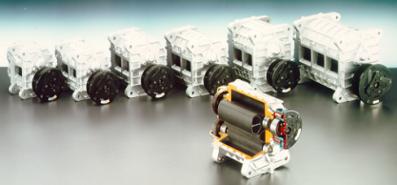|
Advantages of mechanically
driven
superchargers for
engine charging
|
MECHANICAL CHARGING aims
at enhancing the torque of the engine, particularly in the LOW ENGINE SPEED
RANGE, in order to substantially IMPROVE THE LUGGING ABILITY. Thus the
engine can be operated with higher efficiency at unaltered engine speed,
resulting in reduced fuel consumption and lower exhausts. Mechanically
charged engines offer environmental protection and substantially increased
driving comfort and better overall performance.
|
 |
| Supercharger-series
"TX" at a range of 0.4 to 2.8 liters/rev. for engines up to/over 10 liters
of displacement (Diesel or Gasoline). |
|
MECHANICAL
SUPERCHARGING SERVES THE PURPOSE OF:
-
reducing
fuel consumption in driving cycle
-
decreasing
pollutant exhaust emissions
-
improving
torque and power
-
avoiding
delays in reaction time (turbine lag)
-
eliminating
the "turbo-hole"
-
increasing
driving comfort for boats and other powered vehicles
The
new rotary-piston supercharger-series "TX" was developed by WANKEL in Korb
(near Stuttgart / Germany) and has been manufactured in license by OGURA-Clutch
Co. in Akabori / Japan since 1991.
ADVANTAGES
OF THE SYSTEM:
-
higher
efficiency (exceeding 70%) by minimized gap between rotor and housing and
special coating of the rotor surfaces
-
excellent
results in all durability tests
-
immediate
response to acceleration (very low mass inertia)
-
7 different
sizes available; for all engine sizes in vehicles, commercial vehicles,
boats and powered machines
-
lowest
possible size and weight due to optimized adaptation
-
direct
driven by pulley or electromagnetic clutch for engagement on desire
-
supercharger
noise level lower than engine noise due to optimized system (patented system)
-
Application
in 2 and 4-stroke engines up to voluminous diesel-engines. Suitable for
application as exhaust-gas recirculation fan or as secondary fan in exhaust-gas
recovery systems
|


